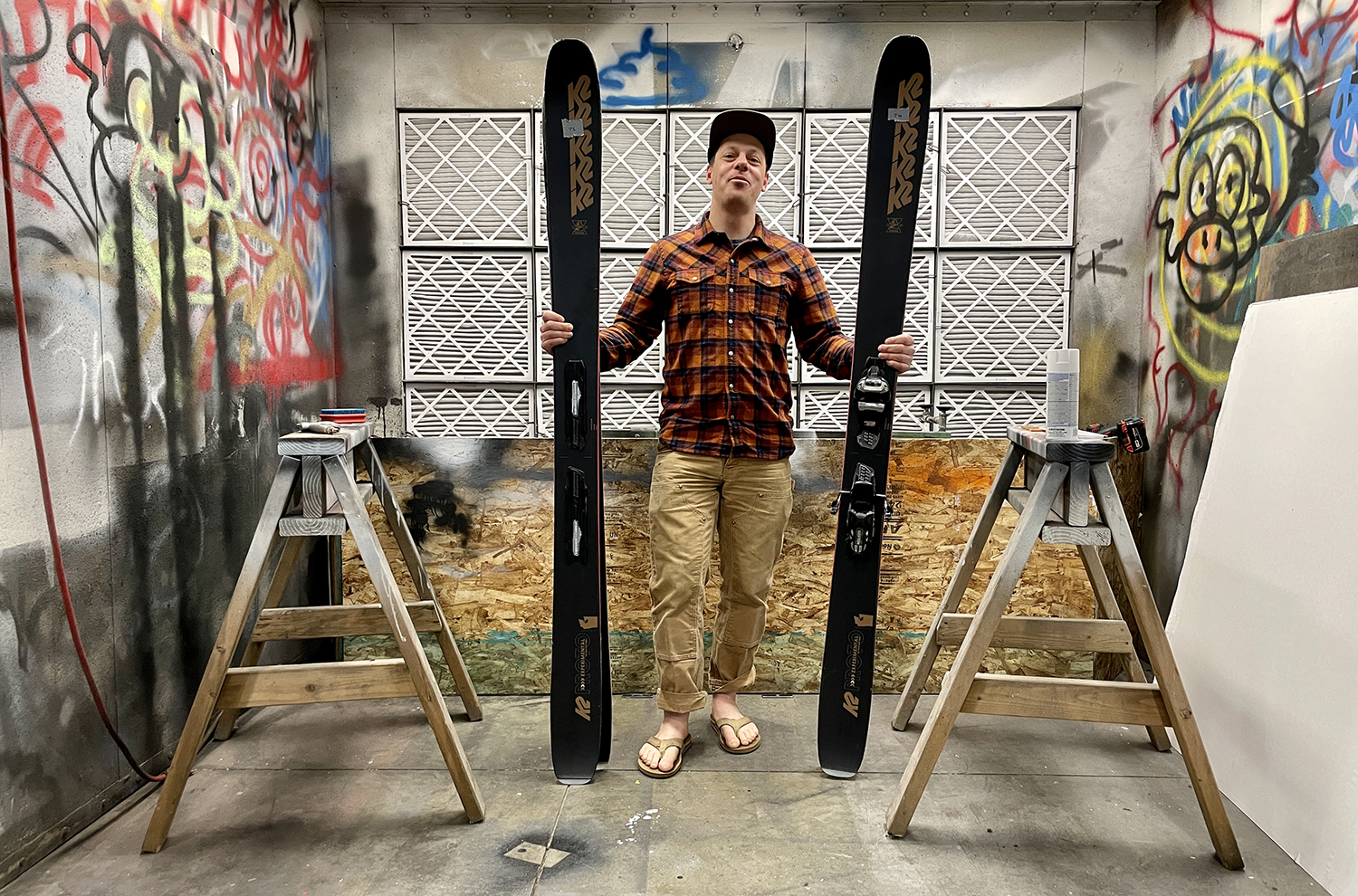


I was in the Cascade mountains of Washington this week with K2 skier, McKenna Peterson, and K2 ski designer, Jed Yeiser, and after a great day of skiing, we sat down to talk about ski developing and prototyping; ski testing; our ski-binding shootout; biathlons; flip flips; & books.
TOPICS & TIMES:
- Skiing the Cascades (6:05)
- Arc — K2’s R&D Center (9:42)
- Testing conditions / the snow (20:50)
- K2 Dispatch 120 (29:39)
- The testing process (31:29)
- Our alpine ski binding shootout (38:40)
- Flip flops (50:14)
- Biathlon (54:35)
- Books & WiFi passwords (59:30)
- What We’re Celebrating (1:06:28)
RELATED LINKS:
- Episode Sponsor: mountainFLOW Eco Wax
- Episode Sponsor: Powder Hound, AK
- Stuff We Like (March 2022)
- Blister Summit Panel: Ski Binding Design
- Subscribe to our Newsletter & Gear Giveaways
- Become a Blister Member / Get our Buyer’s Guide
OUR OTHER PODCASTS:

Can you get the Look Rockerace SPX 15 into the mix? Yes, you can mount them flat. A race binding with high elasticity, a short, almost pivot like mounting distance, a non gripwalk AFD, and the proven Look metal toe. What’s not to love? I use them on my Bonafides and Blossom AM77s mounted flat.
Let us know when you tear out the heel piece.
Welcome to the Pacific NW! I’ve heli-skied in the North – Cascades in these snow conditions and lived with these conditions here off and on, all my life. A firm – snow crud busting ski is one of the answers to this dilemma.
Yeah, Last weekend’s snow was kinda iffy.
On another note, How can I get on this K2 test team?
Also, Jed, change your password to Pan Galactic Gargle Blaster
That was in the running for passwords, but I just don’t like having my brains smashed in by a slice of lemon wrapped around a large gold brick. I did, briefly, consider ‘Towel’ and ‘Don’t Panic’. The latter didn’t get the nod because one of the wi-fi networks around me is named ‘NSA Surveillance Van’.
Nothing to see here, officer
Excited to hear about the green light on alpine binding testing. I consider myself pretty sensitive to ski equipment performance. I am in the camp of all good bindings feel similar. There are two caveats to that from my experience. Stack height is quite noticeable and significant. More important, and for me anyway, more significant is binding ramp or delta angle. It is very noticeable and has a big effect on how a ski performs. The delta angle is all over the map for consumer bindings and when its out of whack, your fore / aft balance is effected. I have added shims under my toe piece to raise the toe to match the heel height, and its a very significant improvement in ski performance. So its not really the binding per say, but the delta angle of the binding that makes the difference. For me two bindings with the same delta will give the same ski performance (assuming similar stack heights too). Some people like equal toe and heel heights and some like lower (5mm) toe heights. It will be important to measure this for your test. Also will require some thought on how to factor this into your test. Some will get along with the delta of a particular binding, some will not. You might need to have two “groups of skiers” or two or more groups of bindings base on delta. Good luck and it will be interesting to see what you come up with.
I bet step in action and sound will also elicit strong preferences, although not really effect ski performance.
I’m curious to hear how sensitive the Blister testers might be to the weight of an alpine binding. Like a very heavy binding vs. a very light binding. Examples of heavy bindings might be a Salomon STH Steel or Look/Rossi PX18. I wonder if they’ll sense a decrease in rebound/pop performance with the heaviest bindings, or maybe a decrease in playfulness while slashing/pivoting, or maybe an increase in stability/smooth ride.
Also curious about if they will be able to sense rubber layers vs no rubber layers. E.g. Salomon STH2 has rubber under both heel and toe, whereas Look/Rossi FKS has no rubber layers. Like if they mount on a carbon-focused ski and stomp to flat hardpack, will Blister testers sense significantly different impulse shocks?
Really interested in the results of your upcoming alpine binding comparison. I have had exactly this question for a long time! How much does a binding affect the ski performance? It seems bizarre that the general perception is that the bindings are largely “safety devices”, while others refer to the bindings as contributing to ski suspension. So shouldn’t it matter? Great podcast.
I just won a pair of K2 Experimental Skis this last Sat. the LeChamois at Palasides Tahoe (FOR EVER SQUAW VALLEY) The best APRES WINE AND BEER BAR AND BEST FOOD IN THE VALLEY. The bartenders are the best and treat everybody with respect the owner is impeccable.
Can you give me some information as to the specifications and what are the main type of snow conditions they are designed for all-around, powder, hard pack? And do you have a recondition of bindings I was thinking Look 360? Also I have been skiing for 72 years now and still skiing with both knees replaced about 6 years ago, one lower back surgery and neck surgery 5 years ago now. I don’t have the recoil in my knees as well but still do some models from time to time but mainly ski the steep and deep.